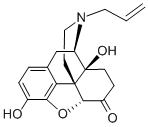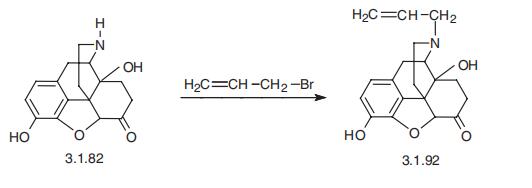
465-65-6
| Name | Naloxone |
| CAS | 465-65-6 |
| EINECS(EC#) | 207-365-7 |
| Molecular Formula | C19H21NO4 |
| MDL Number | MFCD00242634 |
| Molecular Weight | 327.37 |
| MOL File | 465-65-6.mol |
Chemical Properties
| Melting point | 184° (Lewenstein), 177-178° (Sankyo Co.) |
| alpha | D20 -194.5° (c = 0.93 in CHCl3) |
| Boiling point | 465.27°C (rough estimate) |
| density | 1.2223 (rough estimate) |
| refractive index | 1.5000 (estimate) |
| Fp | 9℃ |
| storage temp. | 2-8°C |
| solubility | Chloroform (Slightly, Heated, Sonicated), DMSO (Slightly), Methanol (Slightly), |
| form | Solid |
| pka | pKa 7.94/7.82(H2O,t =20/37,I<0.01) (Uncertain) |
| color | White to Off-White |
| InChIKey | UZHSEJADLWPNLE-GRGSLBFTSA-N |
| EPA Substance Registry System | Morphinan-6-one, 4,5-epoxy-3,14-dihydroxy-17-( 2-propenyl)-, (5.alpha.)-(465-65-6) |
Safety Data
| Hazard Codes | F,T |
| Risk Statements | |
| Safety Statements | |
| RIDADR | UN1230 class 3 PG 2 Methanol, solution |
| WGK Germany | 3 |
| HS Code | 2939190000 |
| Hazardous Substances Data | 465-65-6(Hazardous Substances Data) |
| Toxicity |
